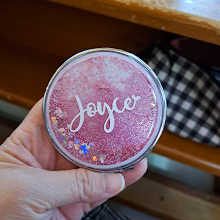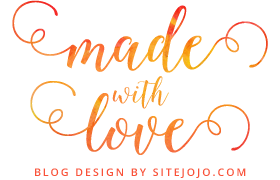Why is sleep important?
Studies have shown that getting adequate quality sleep is beneficial for your physical health, mental well-being, cognitive functions, and overall productivity.
Getting good sleep is like giving your body a superhero boost. It helps
you think sharper, remember things better, and stay focused during the
day.
Sleep isn't just downtime; it's when your body fixes itself,
keeping your immune system strong and your heart healthy. Plus, when you
get enough shut-eye, you're less likely to feel stressed or anxious.
It's like a magic trick for your mood. So, don't underestimate the power
of a good night's sleep – it's your secret weapon for feeling awesome
every day!
What happens when there is disrupted sleep regularity?
Research by the American Academy of Sleep Medicine and the National Heart, Lung, and Blood Institute show that disrupted sleep regularity affect sleep health and lead to the onset, development, and exacerbation of many diseases.
Indications of poor sleep health includes:
- Sleep duration disorder: Too much or too little sleep. Inadequate sleep duration due to recurrent awakenings during sleep can affect daytime life.
- Sleep architecture disorder: Reduced or even no deep sleep and REM.
- Fragmented sleep: Frequent awakenings after falling asleep.
- Difficulty falling asleep: Fail to fall asleep quickly when you feel sleepy.
- Early awakening: Wake up much earlier than expected.
- Increased risks of diseases: Cardiovascular, endocrine, psychiatric, gastrointestinal, skin, menstrual cycle disorders.
- Lack of sleep contributes to muscle loss which leads to harder to lose body fat. Read about "Why Does Lack of Sleep Cause You to Gain Weight?"
What are the stages of sleep?
Light Sleep (NREM 1 and 2)
- You're in the early stages of sleep.
- Easily woken up, might feel like you're drifting.
- Lasts for a short time.
Deep Sleep (NREM 3 and 4)
- This is the really deep sleep, typically accounts for 10 to 35 percent of the total sleep time.
- It's hard to wake up during this stage.
- Relieves us from the day's exhaustion and helps our body recover strength.
- Your body repairs muscles, tissues, and boosts immune function.
- Sufficient deep / restorative sleep can help us feel more energetic the next day.
- Insufficient deep sleep affects our body's repair mechanisms, leading to accelerated aging, reduces our body's immunity, and may lead to endocrine disorders, predispose our body to insulin resistance and cardiovascular diseases, and cause or exacerbate high blood glucose.
REM (Rapid Eye Movement) Sleep
- Typically accounts for 10 to 35 percent of the total sleep time.
- This is where most dreaming happens.
- Your eyes move quickly in different directions.
- Brain activity is high, similar to when you're awake, heart rate increases, breathing becomes irregular.
- This stage is crucial for learning, memory consolidation, and emotional management.
- Memory consolidation: It will integrate the things we experienced, people we saw, knowledge, and skills we learned during the day with similar memories from the past and formed new memories.
- Emotion management: The amygdala, a structure in the brain associated with emotion management, is activated during REM sleep and can help deal with destructive emotions.
Sleep cycles through these stages multiple times in a night. Each cycle takes about 90-110 minutes, and a good night's sleep involves several cycles.
Fragmented sleep or recurrent awakenings during sleep may disrupt sleep architecture, causing important restorative sleep (deep sleep and REM sleep) doesn't occur, persist, or function as it should. This can trigger mood swings which then leads to more frequent awakenings, difficulty falling back asleep, and early morning awakenings.
What is sleep hygiene?
Sleep hygiene refers to a set of practices and habits that promote healthy and restful sleep. These practices help ensure good habit of regular sleep, proper sleep quality, and overall well-being.
Therefore, adopting good sleep hygiene practices can greatly enhance your sleep quality and daily life.
What are the 10 healthy rules for a good night's sleep?
Rule #1: Establish a consistent sleep schedule
Establishing a consistent sleep schedule includes making a regular bedtime and wake-up schedule. Waking up at a fixed time each day is key to developing regular sleep. Try to go to bed and wake up at the same time every day, even on weekends. This helps regulate your body's internal clock and improves the quality of your sleep.
Rule #2: Take a short nap if you're tired during the day
Short power naps can be beneficial, but excessive daytime
napping can interfere with nighttime sleep. If you need to nap, keep it
short (20-30 minutes) and early in the day.
Rule #3: Avoid caffeine too late in the day or before bedtime
Avoid
consuming caffeine-containing products and beverages especially when it's too late in the day because they may disrupt your sleep.
Rule #4: Avoid eating or snacking before bedtime
Rule #5: Sleep on a comfortable bed
Invest in a comfortable mattress and pillows that support your sleep posture.
Rule #6: Create a comfortable sleep environment
Your bedroom should be conducive to sleep in. Keep the room well-ventilated and maintain a comfortable temperature and humidity.
Rule #7: Block out noises and lights
Your bedroom should be conducive to sleep in. Keep the room dark and as quiet as possible.
Rule #8: Keep electronic gadgets and devices away during bedtime
The blue light emitted by phones, tablets, and computers can interfere with your body's production of melatonin, a hormone that regulates sleep. Avoid or limit screen time at least an hour before bedtime.
Rule #9: Practice stress management & regular exercise
Chronic stress can disrupt sleep. Engage in stress-reduction techniques
such as meditation, deep breathing, or yoga to help calm your mind
before bed. Regular exercise can help you fall asleep faster and enjoy deeper sleep. However, do avoid strenuous exercise 3 hours before bedtime.
Rule #10: Establish and stick to your bedtime routine
Develop a calming wind-down bedtime routine to signal to your body that
it's time to relax. This could involve activities like reading,
listening to soothing music, or practicing relaxation techniques. Complete bedtime preparation - bathing, relaxing, at a fixed time each night.
Also, go to bed only when you feel sleepy, and get out of bed as soon as possible instead of sleeping in after waking up in the morning.
As a wolf (sleep chronotype), I have issues going to bed early, so it's kinda hard for me to wake up feeling refreshed
and rejuvenated every morning. So, I'm taking my time to establish the above 10 rules. Wish me luck!







































































